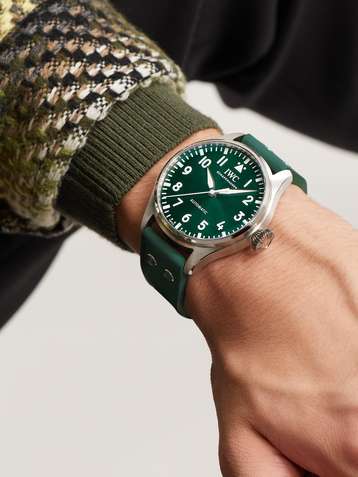IWC Schaffhausen
Established in 1868, IWC Schaffhausen is defined by meticulous Swiss craftsmanship, industrious engineering, and sophisticated design. The brand is renowned for its in-house manufactured movements and six watch families, including classic pilot's references and the iconic 'Portugieser' line. Explore our IWC Schaffhausen collection.
more
Favourite Designer
Filter25 Results
Recommended
- Recommended
- Price Low to High
- Price High to Low
- New In







